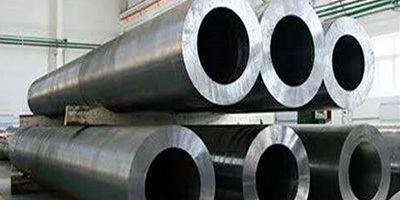
Steps for Developing Forging Heat Treatment Process
Release time:
20 Jan,2025
1. Collecting data and research analysis (1) Study the feasibility and rationality of the heat treatment technical requirements specified in the drawings. Reasonably determining the heat treatment technical requirements is a prerequisite for normal production of heat treatment and ensuring product quality.
1. Collecting data and research analysis
(1) Study the feasibility and rationality of the heat treatment technical requirements specified in the drawings. Reasonably determining the heat treatment technical requirements is a prerequisite for normal production of heat treatment, ensuring product quality, and reducing production costs. Therefore, the following factors should be considered:
1) Appropriately propose performance requirements based on the usage conditions of the forgings. For example, the drive shaft mainly bears the combined effects of bending stress and torsional stress, so for quenching, it is only required to quench to 1/2 or 1/3 of the radius of the part.
2) The heat treatment requirements can only be set within the allowable range of hardenability and hardening of the selected steel grade. It is unreasonable to require large cross-section parts to achieve the performance indicators of small-sized samples or to require low carbon steel to reach high hardness without chemical heat treatment.
3) The heat treatment requirements should allow for a certain amount of heat treatment deformation. Due to the phase change stress and thermal stress during the heat treatment of forgings, heat treatment deformation is unavoidable. A certain amount of deformation should be allowed based on the selected steel grade and geometric dimensions of the forgings. These deformations can be corrected through subsequent machining or adjustments before quenching.
4) Economic considerations. When proposing the heat treatment technical requirements for forgings, the manufacturing cost, service life, and other economic factors of the forgings should be comprehensively considered.
(2) Study the supply status of the blanks or materials. Based on the supply status of the blanks or materials, determine whether to add preliminary heat treatment to meet the final heat treatment requirements and the precision requirements of the blank dimensions.
(3) Determine the optimal position of the heat treatment process based on the manufacturing process route of the forgings. Mechanical parts generally go through blank forging, cutting processing, and heat treatment processes. Therefore, whether the sequence arrangement of the heat treatment process and other processing procedures is reasonable will directly affect the processing and heat treatment quality of the forgings.
1) The relationship between heat treatment and cutting machinability. The machinability of steel is related to its chemical composition, metallographic structure, and mechanical properties. Different compositions of steel can achieve different structures and properties through different heat treatment processes, thereby improving the cutting machinability of the steel.
Generally speaking, steel with a hardness range of 170-230 HBW has good cutting machinability. If the hardness is too high, it is difficult to process, and the tools wear easily; if the hardness is too low, it is easy to "stick" to the tool during cutting, causing the tool to heat up and wear, and the surface of the workpiece will not be smooth. Therefore, pre-heat treatment should be arranged before cutting. Generally, low carbon steel is normalized, while high carbon steel and alloy steel have too high hardness after normalization and must be annealed.
2) The impact of the forging processing route on heat treatment. Whether the arrangement of the part processing route is reasonable will directly affect the quality of heat treatment. For example, for parts such as gears, long shaft sleeves, and washers, under permissible conditions, high-frequency induction quenching can be performed first, followed by machining the inner holes, keyways, or holes on the washers. This can reduce deformation and ensure precision. For certain precision parts, in order to reduce the impact of stress caused by changing from cutting to grinding on dimensional stability, stress relief annealing or aging treatment can generally be interspersed in the process route.
2. Determine the heat treatment process plan.
1) Based on the technical requirements of the forgings, propose several feasible heat treatment process plans, analyze and compare the complexity of the process operations and the quality consistency, and then conduct a comprehensive technical and economic analysis based on the production batch size, existing equipment, and the development trend of domestic and international heat treatment technology to determine the most economical and optimal process plan.
2) The determination of the heat treatment plan for new material parts generally involves three steps: First, conduct experiments in the laboratory on the determined heat treatment process to check whether the specified mechanical performance indicators can be achieved and how the cold and hot processing performance is; second, necessary bench tests or installation tests should be conducted to assess the performance; finally, small batch tests and production tests should be conducted to assess the reliability of various process performances and quality under production conditions. Forgings can only be officially applied in production after meeting the above test requirements.
3) Determine process parameters based on standards or relevant technical documents or verify and adjust process parameters through process tests.
4) Select heat treatment equipment based on the process, part characteristics, energy policies, and the equipment conditions of the enterprise.
5) Design process tooling according to the requirements of the process plan, and arrange auxiliary processes (cleaning, clearing, calibration, protection, etc.) according to the part requirements and process implementation route.
6) Determine inspection methods and equipment, and design special inspection tooling as needed.
3. Formulate heat treatment process regulations.
When formulating heat treatment process regulations by referring to relevant heat treatment manuals, related material standards, or after process testing verification, the corresponding process cards should be filled out according to different process methods (quenching, carburizing or carbonitriding, induction hardening, etc.). The process card is a regulatory document that operators must comply with, and its basic content is as follows:
1) Overview of the forgings, including the name and number of the forgings, material grade, quality, profile dimensions, heat treatment-related dimensions, process route, etc.
2) Heat treatment technical requirements. The technical requirements on the heat treatment process card are more detailed and specific than those proposed in the drawings. For example, after chemical heat treatment of the forgings, further cutting processing is required, and the hardened layer depth on the heat treatment process card should include the cutting allowance.
3) Simplified drawing of the part. A simplified drawing of the part is included on the process card for easy identification and verification of the part, and the locations for local heat treatment and hardness inspection are also clear.
4) Loading method and loading quantity.
5) Names and numbers of equipment and tooling.
6) Process parameters, including holding time, cooling method, cooling medium, etc. For chemical heat treatment, it also involves carbon potential, nitrogen potential, and the flow rate of active media.
7) Content of quality inspection, inspection methods, and sampling rate.
4. Co-signing and approval of the heat treatment process.
The formulated heat treatment process shall take effect and be implemented after necessary review, approval by the superior technical management department, approval by the quality assurance department, and co-signing by other relevant departments.
Previous Page:
Next page:
Related News
Flange Standards and Selection Methods
20 Jan,2025
What is free forging of forged flanges?
20 Jan,2025



